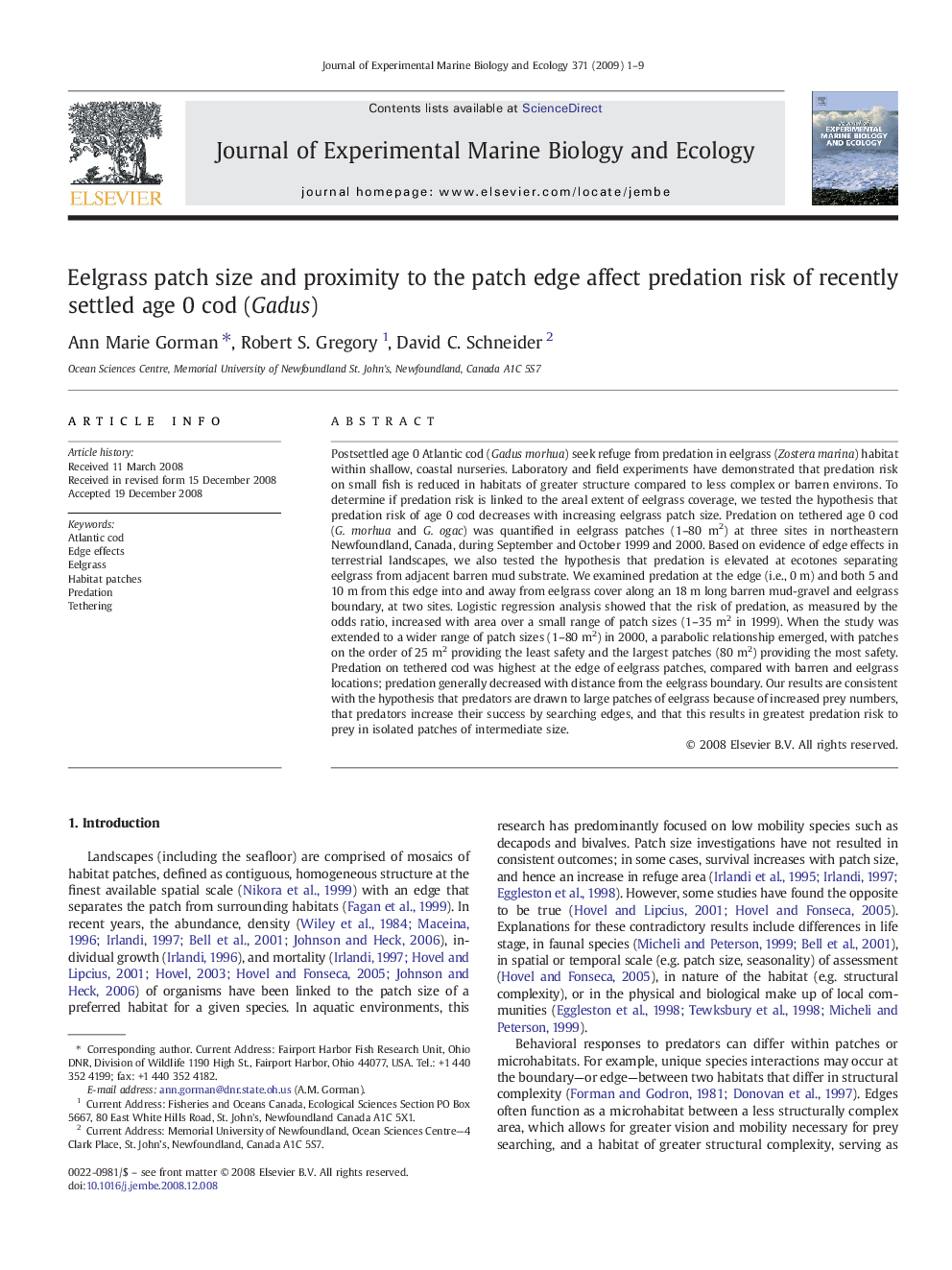| کد مقاله | کد نشریه | سال انتشار | مقاله انگلیسی | نسخه تمام متن |
|---|---|---|---|---|
| 4397007 | 1305859 | 2009 | 9 صفحه PDF | دانلود رایگان |
عنوان انگلیسی مقاله ISI
Eelgrass patch size and proximity to the patch edge affect predation risk of recently settled age 0 cod (Gadus)
دانلود مقاله + سفارش ترجمه
دانلود مقاله ISI انگلیسی
رایگان برای ایرانیان
کلمات کلیدی
موضوعات مرتبط
علوم زیستی و بیوفناوری
علوم کشاورزی و بیولوژیک
علوم آبزیان
پیش نمایش صفحه اول مقاله

چکیده انگلیسی
Postsettled age 0 Atlantic cod (Gadus morhua) seek refuge from predation in eelgrass (Zostera marina) habitat within shallow, coastal nurseries. Laboratory and field experiments have demonstrated that predation risk on small fish is reduced in habitats of greater structure compared to less complex or barren environs. To determine if predation risk is linked to the areal extent of eelgrass coverage, we tested the hypothesis that predation risk of age 0 cod decreases with increasing eelgrass patch size. Predation on tethered age 0 cod (G. morhua and G. ogac) was quantified in eelgrass patches (1-80Â m2) at three sites in northeastern Newfoundland, Canada, during September and October 1999 and 2000. Based on evidence of edge effects in terrestrial landscapes, we also tested the hypothesis that predation is elevated at ecotones separating eelgrass from adjacent barren mud substrate. We examined predation at the edge (i.e., 0Â m) and both 5 and 10Â m from this edge into and away from eelgrass cover along an 18Â m long barren mud-gravel and eelgrass boundary, at two sites. Logistic regression analysis showed that the risk of predation, as measured by the odds ratio, increased with area over a small range of patch sizes (1-35Â m2 in 1999). When the study was extended to a wider range of patch sizes (1-80Â m2) in 2000, a parabolic relationship emerged, with patches on the order of 25Â m2 providing the least safety and the largest patches (80Â m2) providing the most safety. Predation on tethered cod was highest at the edge of eelgrass patches, compared with barren and eelgrass locations; predation generally decreased with distance from the eelgrass boundary. Our results are consistent with the hypothesis that predators are drawn to large patches of eelgrass because of increased prey numbers, that predators increase their success by searching edges, and that this results in greatest predation risk to prey in isolated patches of intermediate size.
ناشر
Database: Elsevier - ScienceDirect (ساینس دایرکت)
Journal: Journal of Experimental Marine Biology and Ecology - Volume 371, Issue 1, 31 March 2009, Pages 1-9
Journal: Journal of Experimental Marine Biology and Ecology - Volume 371, Issue 1, 31 March 2009, Pages 1-9
نویسندگان
Ann Marie Gorman, Robert S. Gregory, David C. Schneider,